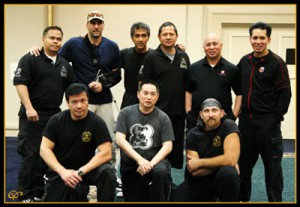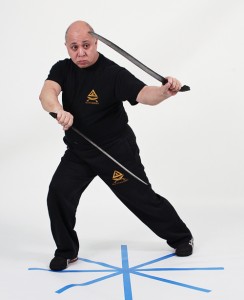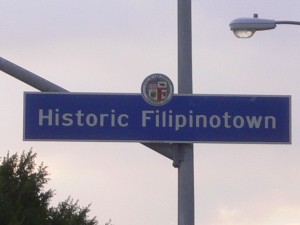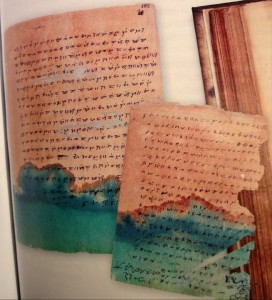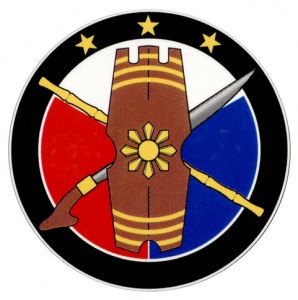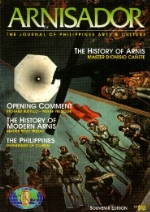A finales de Junio 2011 Workshop con armas blancas con Guro Dino Flores - conocido como uno de los peleadores más técnicos y avanzados del grupo SOG de LAMECO y KALIS ILUSTRISIMO (Sulite Original Backyard Group) http://www.kali-jeetkunedo.com/6noticias.html Interested contact with Sifu Tim Fredianelli 615308348 Space must be reserved in advance for these courses, places are limited to ensure quality. Special rates and privileges for members only at our school … [Read more...]
Film: Amigo (2010)
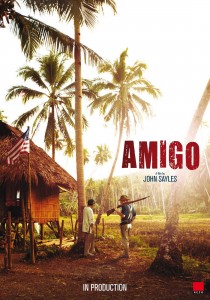
Movie: Amigo (2010) Amigo is a 2010 American drama film written and directed by John Sayles. The film takes place in the Philippines in 1900 during the Philippine–American War. It is one of only a small handful of films directed by an American to address the war. Plot Amigo centers on Rafael Dacanay, cabeza of the barrio of San Isidro in a rice-growing area of Luzon. His brother Simón, head of the local guerilla band, has forced the surrender of the Spanish guardia civil outpost and charged Rafael with the task of imprisoning the guardia Captain and the barrio’s Spanish friar, Padre Hidalgo, in the name of the revolutionary government. But when the American troops chasing General Aguinaldo arrive, the Spanish officer and Padre Hidalgo are freed, and a garrison under the command of Lieutenant Ike Compton is left to ‘protect’ the barrio. The American occupation policy now changes from ‘hearts and minds’ to ‘concentration’ (what was called ‘hamletting’ during the Vietnam war) and Rafael has to answer to both the Americans and the Filipino patriots, with deadly consequences. Cast • Chris Cooper as Col. Hardacre • Garret Dillahunt as Lt. Compton • DJ Qualls as Zeke • Yul Vàzquez as Padre Hidalgo • Joel Torre as Rafael • Lucas Neff as Shanker • James Parks as Sgt. Runnels • Dane DeHaan as Gill • Stephen Taylor as Pvt. Bates • Rio Locsin as Corazon • Jemi Paretas as Zuniga • Bill Tangradi as Dutch • Bembol Roco as Policarpio • Ronnie Lazaro as Simon • Irma Adlawan as Josefa Press Cinematical reports that the film was once titled Baryo, and that the idea for it came from a yet-to-be-published novel Some Time in the Sun, detailing U.S. imperialism in the Philippines. The book will actually be called A Moment in the Sun, though the unrealized screenplay which inspired it was called Some Time in the Sun. Distribution Amigo will show on September 14 at the 2010 Toronto International Film Festival. It will also screen at the San Sebastián International Film Festival and the Rio de Janeiro International Film Festival. In North America, the film will be released on August 20, 2011 by Variance Films. From Wikipedia … [Read more...]
The Two Conquests By Angel Postigo
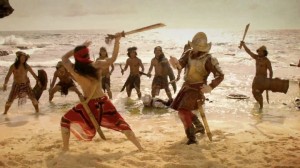
Guro Dino of the Mandirigma Research Organization met Professor Angel Postigo and his father on one of his many business trips to Los Angeles from Mexico. Professor Postigo is a person with a very impressive resume in the warrior arts and journalism, among other things, having written for Artes Marciales, Katana, Kung Fu Magazine, Legitima Defensa and National Sports Directory of Mexico. They found that they both have a passion for history and its relationship to the warrior arts. Some of the discussions they had concerned the connections between the Philippines and Mexico for hundreds of years. Professor Postigo felt that mandirigma.org would be an excellent venue to present his articles of this often overlooked relationship between the Philippines and Mexico in history. Quoting Professor Postigo, "The reason why I am interested in working with "mandirigma.org" is to showcase my work as a writer interested in disseminating and spreading the culture of the Martial Arts of the Philippines, work that I have done in several Mexican magazines." Friday, October 12th, 2007 The Two Conquests By Angel Postigo Suddenly, the ascent they had begun at the beach, finally ended. Thousands of miles behind, their guides had led them to cross between those two volcanoes, the Popocatepetl and the Iztacihuatl. Standing in the snow, those iron men and their heraldic horses had that spectacle at their feet: beyond this wooded spot of splendid beauty, far beyond, into those mountains, a wide green valley was extended, and in the center the lakes shined like silver, and above the islands and the banks, those citadels with plazas and wide roads, the high roofs of its temples upon splendid hand-painted pyramids, and the woods and great fields full of exotic plants that enlightened those magic days of autumn. For the first time, western men looked at that wonderful landscape, as if painted on the evening air, and their eyes glowed as they contemplated the plain and remembered the gold and sacred feathered presents they had been offered as a plead to retire, to stay away. Cortes and his soldiers had started the advance to that plain, to Tenochtitlan, and the battles were about to begin. The great lord of the empire, Moctezuma II, intelligent and educated man, though deeply superstitious as most of his people, knew that his kingdom had come to its end. The news had spread as a desperate scream: Quetzalcoatl has returned, the Serpent God that promised to return in the year one, Acatl (1519), the prophecies are fulfilled now, the white-skinned bearded God has returned. Moctezuma knows a battle against a God is impossible, he has to have the help of other gods in order to save his nation. Being Cortes an extremely skillful politician and warrior, he perceives the rivalries between the different towns, and above all, the exacerbated hate against the Mexicas and their Aztec empire. Cortes returned to Tenochtitlan, not before suffering a defeat known as the Sad Night, when fallen and surrounded he was spared as many soldiers thanks to the tradition of not killing the enemy, just defeating them to take some prisoners for the ritual sacrifices. According to the number of prisoners, those warriors, Eagle men and Jaguar men, ascended in their military ranges. They were true conquerors who went further their frontiers of Guatemala, but their conquest had seeded rancor against the Aztec empire. Their armies were the best armed and trained. They had a regular troop, Yaoquizquel, and a lower but considerable number of noble warriors, Pipiltin, who belonged to a society known as the Eagle men, Quauhtin, and Jaguar men, Ocelomeh. Their elegant clothing had the skins of those felines and the feathers of those sacred birds. They were the sons of nobles who went to the Calmecac to receive military and cultural education, they learned astronomy, rhetoric, poetry, but above all, religion, and their status was well established, and how they could ascent according to their bravery, but above all, to the number of prisoners caught in battle. The Tlamani were the ones in charged of guarding the prisoners. This noble warriors, elegantly dressed, had as their main weapons the Macuahuitl, a kind of long club with sharp obsidian points, a round shield made of leather named Chimalli, an arc known as Tlauitolli, and a throwing spear, Atlatl. As he walks through many different spots of this empire, Cortes realizes the situation. In some places he has battles, but in others he comes to agreements easily, accomplishing an alliance in the first year of his arrival, and after establishing the Villa Rica de la Vera Cruz. One of the alliances was with the Zapoteca people, and afterwards, with others oppressed by the Aztec empire, the Texcocanos, the Huejotzincas and the Totonacas. Cortes starts his first march towards Mexico, Tenochtitlan, on August 16th, 1519, towards the heart of the empire. He has only 400 Spanish soldiers, 15 horses, 3 canons, … [Read more...]
Film: The Pacific Connection – Philippines, 1974
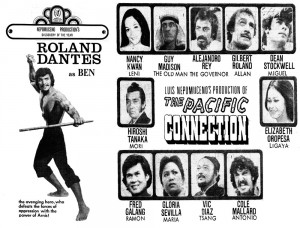
Roland Dantes plays an avenging hero, who defeats the forces of oppression with the power of Arnis! Roland Dantes plays Ben, a farm boy who comes into conflict with the Evil Spanish Governor and his two sons. One of the sons is played by a young Dean Stockwell. To assist in their oppression the Governor hires a Samurai played by Hiroshi Tanaka to teach his son the Japanese Katana sword. To counter this, Ben studies under a blind Franciscan monk to obtain some advanced fighting secrets and develop his warrior senses. Additionally Ben must search for the legendary "Iron Reed". A mystical stick so strong that grows in the lava of an active Volcano. One of the first full length movies featuring the Philippine Warrior Arts. A must see for any Filipino Martial Arts practitioner. Made in a similar spirit of the "Kung Fu" movies coming out of Hong Kong at the same time in the 1970's. The fight scenes were choreographed by Professor Remy Presas himself and is jam packed with Arnis inspired fight scenes. Dean Stockwell learned Arnis for his role and continued his Arnis practice long after the filming was over. The success of this movie led to a follow up film "Arnis: Sticks of Death" in 1984 also starring Roland Dantes. Director: Luis Nepomuceno Country: Philippines Language: English Release Date: 1974 (Philippines) Stars: Roland Dantes, Dean Stockwell, Hiroshi Tanaka, Nancy Kwan, Guy Madison, Alejandro Rey, Gilbert Roland, Elizabeth Oropesa, Fred Galang, Gloria Sevilla, Vic Diaz, Cole Mallard … [Read more...]
Who Discovered the Philippines? by Perry Diaz
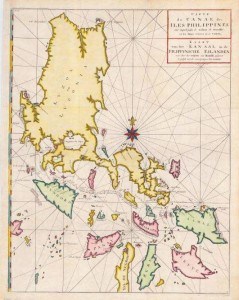
Who Discovered the Philippines? PerryScope Perry Diaz, Global Balita Philippine history books have been saying that Ferdinand Magellan discovered the Philippines. But was he really the one who discovered the Philippines? Long before Magellan landed in the Philippine archipelago, visitors and colonizers from other lands had come to our shores. The earliest evidence of the existence of modern man — homo sapiens sapiens — in the archipelago was discovered in 1962 when a National Museum team led by Dr. Robert Fox uncovered the remains of a 22,000-year old man in the Tabon Caves of Palawan. The team determined that the Tabon Caves were about 500,000 years old and had been inhabited for about 50,000 years. In the late 1990s, Jared Diamond, Professor of Geography at UCLA and winner of the Phi Beta Kappa Award in Science, and Peter Bellwood, Professor of Archaeology at the Australian National University, postulated that the Austronesians had their roots in Southern China. Diamond said that they migrated to Taiwan around 3,500 B.C. However, Bellwood believed that the Austronesian expansion started as early as 6,000 B.C. Around 3,000 B.C., the Malayo-Polynesians — a subfamily of the Austronesians — began their migration out of Taiwan. The first stop was northern Luzon. Over a span of 2,000 years, the Malayo-Polynesian expansion spread southward to the rest of the Philippine archipelago and crossed the ocean to Celebes, Borneo, Timor, Java, Sumatra, Malay Peninsula, and Vietnam; westward in the Indian Ocean to Madagascar; and eastward in the Pacific Ocean to New Guinea, New Zealand, Samoa, Fiji, Marquesas, Cook, Pitcairn, Easter, and Hawaii. Today, the Malayo-Polynesian speaking people have populated a vast area that covers a distance of about 11,000 miles from Madagascar to Hawaii, almost half the circumference of the world. In 2002, Bellwood and Dr. Eusebio Dizon of the Archaeology Division of the National Museum of the Philippines led a team that conducted an archaeological excavation in the Batanes Islands, which lie between Taiwan and Northern Luzon. The three-year archaeological project, financed by National Geographic, was done to prove — or disprove — the “Out of Taiwan” hypothesis for the Austronesian dispersal. The archaeological evidence that they gathered proved that the migration from Taiwan to Batanes and Luzon started about 4,000 years ago. For the next 500 years after the arrival of the Malayo-Polynesians in Batanes and Northern Luzon, native settlements flourished throughout the archipelago. The Philippine islands’ proximity to the Malay Archipelago, which includes the coveted Moluccas islands — known as the “Spice Islands” — had attracted Arab traders who had virtual monopoly of the Spice Trade until 1511. By the 9th century, Muslim traders from Malacca, Borneo, and Sumatra started coming to Sulu and Mindanao. In 1210 AD, Islam was introduced in Sulu. An Arab known as Tuan Mashaika founded the first Muslim community in Sulu. In 1450 AD, Shari’ful Hashem Syed Abu Bakr, a Jahore-born Arab, arrived in Sulu from Malacca. He married the daughter of the local chieftain and established the Sultanate of Sulu. In the early 16th century, Sharif Muhammad Kabungsuan, a Muslim preacher from Malacca arrived in Malabang in what is now Lanao del Sur and introduced Islam to the natives. In 1515 he married a local princess and founded the Sultanate of Maguindanao with Cotabato as its capital. By the end of the 18th century, more than 30 sultanates were established and flourished in Mindanao. The Sultanates of Maguindanao and Sulu were the most powerful in the region. Neither of them capitulated to Spanish dominion. Chinese traders — who were also involved in the Spice Trade — started coming to the Philippine archipelago in the 11th century. They went as far as Butuan and Sulu. However, most of their trade activities were in Luzon. In 1405, during the reign of the Ming Dynasty in China, Emperor Yung Lo claimed the island of Luzon and placed it under his empire. The Chinese called the island “Lusong” from the Chinese characters Lui Sung. The biggest settlement of Chinese was in Lingayen in Pangasinan. Lingayen also became the seat of the Chinese colonial government in Luzon. When Yung Lo died in 1424, the new Emperor Hongxi, Yung Lo’s son, lost interest in the colony and the colonial government was dissolved. However, the Chinese settlers in Lingayen — known as “sangleys” — remained and prospered. Our national hero Dr. Jose P. Rizal descended from the sangleys. The lucrative Spice Trade attracted the European powers. In 1511 a Portuguese armada led by Alfonso d’Albuquerque attacked Malacca and deposed the sultanate. Malacca’s strategic location made it the hub of the Spice Trade; and whoever controlled Malacca controlled the Spice Trade. At that time, Malacca had a population of 50,000 and 84 languages were spoken. It is interesting to note that in 1515, … [Read more...]
Macario Sakay: Tulisán or Patriot? by Paul Flores
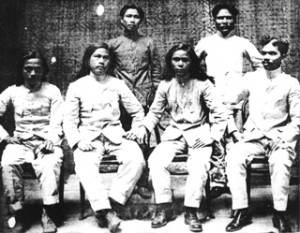
Macario Sakay: Tulisán or Patriot? by Paul Flores © 1996 by Paul Flores and PHGLA All rights reserved Contrary to popular belief, Philippine resistance to American rule did not end with the capture of Emilio Aguinaldo in 1901. There were numerous resistance forces fighting for Philippine independence until the year 1910. One of these forces was led by Macario Sakay who established the Tagalog Republic. Born in 1870 in Tondo, Macario Sakay had a working-class background. He started out as an apprentice in a calesa manufacturing shop. He was also a tailor, a barber, and an actor in comedias and moro-moros. His participation in Tagalog dramas exposed him to the world of love, courage, and discipline. In 1894, Sakay joined the Dapitan, Manila branch of the Katipunan. Due to his exemplary work, he became head of the branch. His nightly activities as an actor in comedias camouflaged his involvement with the Katipunan. Sakay assisted in the operation of the Katipunan press. During the early days of the Katipunan, Sakay worked with Andres Bonifacio and Emilio Jacinto. He fought side by side with Bonifacio in the hills of Morong (now Rizal) Province. During the initial stages of the Filipino-American war, Sakay was jailed for his seditious activities. He had been caught forming several Katipunan chapters and preaching its ideals from town to town. Republika ng Katagalugan Released in 1902 as the result of an amnesty, Sakay established with a group of other Katipuneros the Republika ng Katagalugan in the mountains of Southern Luzon. Sakay held the presidency and was also called "Generalisimo." Francisco Carreon was the vice-president and handled Sakay's correspondence. Julian Montalan was the overall supervisor for military operations. Cornelio Felizardo took charge of the northern part of Cavite (Pasay-Bacoor) while Lucio de Vega controlled the rest of the province. Aniceto Oruga operated in the lake towns of Batangas. Leon Villafuerte headed Bulacan while Benito Natividad patrolled Tanauan, Batangas. In April 1904, Sakay issued a manifesto stating that the Filipinos had a fundamental right to fight for Philippine independence. The American occupiers had already made support for independence, even through words, a crime. Sakay also declared that they were true revolutionaries and had their own constitution and an established government. They also had a flag. There were several other revolutionary manifestos written by the Tagalog Republic that would tend to disprove the U.S. government's claim that they were bandits. The Tagalog Republic's constitution was largely based on the early Katipunan creed of Bonifacio. For Sakay, the new Katipunan was simply a continuation of Bonifacio's revolutionary struggle for independence. Guerilla tactics In late 1904, Sakay and his men took military offensive against the enemy. They were successful in seizing ammunition and firearms in their raids in Cavite and Batangas. Disguised in Philippine Constabulary uniforms, they captured the U.S. military garrison in Parañaque and ran away with a large amount of revolvers, carbines, and ammunition. Sakay's men often employed these uniforms to confuse the enemy. Using guerrilla warfare, Sakay would look for a chance to use a large number of his men against a small band of the enemy. They usually attacked at night when most of the enemy was looking for relaxation. Sakay severely punished and often liquidated suspected collaborators. The Tagalog Republic enjoyed the support of the Filipino masses in the areas of Morong, Laguna, Batangas, and Cavite. Lower class people and those living in barrios contributed food, money, and other supplies to the movement. The people also helped Sakay's men evade military checkpoints. They collected information on the whereabouts of the American troops and passed them on. Muchachos working for the Americans stole ammunition and guns for the use of Sakay's men. Unable to suppress the growth of the Tagalog Republic, the Philippine Constabulary and the U.S. Army started to employ "hamletting" or reconcentration in areas where Sakay received strong assistance. The towns of Taal, Tanauan, Santo Tomas, and Nasugbu in the province of Batangas were reconcentrated. This cruel but effective counter-insurgency technique proved disastrous for the Filipino masses. The forced movement and reconcentration of a large number of people caused the outbreak of diseases such as cholera and dysentery. Food was scarce in the camps, resulting in numerous deaths. Meanwhile, search and destroy missions operated relentlessly in an attempt to suppress Sakay's forces. Muslims from Jolo were brought in to fight the guerrillas. Bloodhounds from California were imported to pursue them. The writ of habeas corpus was suspended in Cavite and Batangas to strengthen counter-insurgency efforts. With support cut off, the continuous American military offensive caused the Tagalog Republic to weaken. Fall of … [Read more...]
Lameco Sulite Orihinal Group
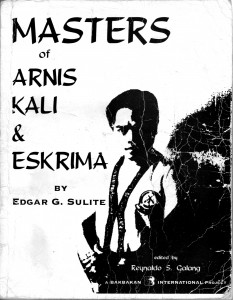
Lameco Sulite Orihinal Group Sulite Orihinal Group is comprised of dedicated Lameco Eskrima International practitioners who were handpicked by Punong Guro himself to be a part of his regular "backyard" training sessions. Many loyal Lameco practitioners have trained in the "backyard", yet there was and always will be a distinction between "Invitation Only" and "Open Invitation" students. The open invitation students were the selected few individuals who attended the rigorous, 3 days a week, 4-hour sessions and were frequently shown numerous techniques not shared with the general public. An important factor among the core members was that they held no administrative ties to other Filipino Martial Arts styles and systems. One of the primary reasons Punong Guro created the elite group was to create a first generation of practitioners that owed allegiance, first and foremost, to Lameco Eskrima. Because the sessions were conducted at his personal residence, Punong Guro was extremely selective about whom he allowed to participate. Punong Guro often mentioned that although many individuals were eager to train, very few actually allowed themselves to be trained. It is not a system, for it already exists, but a fraternity of dedicated practitioners with a common bond. One factor that is prevalent among the original core members is that they initially joined Lameco Eskrima International for reasons of pride, culture and heritage. The primary aim of the group is to keep the art of Lameco Eskrima alive through continued training in a combat realistic, non-commercial and non-political environment. Passion for the art was, and always will be, the prime motivator. As a sign of respect so that Punong Guro’s name shall always be remembered for many generations to come, the core members named themselves “Sulite Orihinal Group.” Sulite Orihinal Group considers their inherited knowledge more precious beyond any material compensation, just as much as the blood, sweat and tears that were spilled by our forefathers in order to obtain it, so we strive to be worthy of the generations of warriors before us. The desire of the brotherhood is to continue traveling upon the same path, which Punong Guro Edgar G. Sulite had started them on. They wish to keep his legacy, and the heritage, alive and pure and pursue it with a mind, body and sprit that is nothing short of being honorable. Sulite Orihinal Group will continue to uphold this tradition in order to maintain the spirit of brotherhood and unity amongst its members. Lameco Sulite Orihinal Group circa 1992 -1997 Lameco Sulite Orihinal Group circa 1992 -1997 Lowell Pueblos, Eric Koh, Ron Balicki Mar Elepano, Hospecio "Bud" Balani, jr., Rem V. Cruz, Dino Flores, Arnold Noche, Hans Anton Tan, Pelix Balencia, Dave Gould, Steve Grody Elmer "Bong" Hebia, Roger Agbulos, Jason Ancheta Marc F. Denny, Steve Tarani, Phil Rapagna , Choy Flores, Gary Quan Joel '"Jay" Adriatico, Bryant Emerson, Sung Han Kim, Rodney Wilson, Pantaleon " Mang Leo" Revilles, jr. ( R.I.P. ) … [Read more...]
Film: Sticks of Death (Arnis: The Sticks of Death) – 1984

Sticks of Death (Arnis: The Sticks of Death) This Filipino Martial Arts action film features Roland Dantes. Dantes plays Johnny Guerrero, a man who masters the ancient art of arnis with the help of his grandfather to get revenge on a group of crooks who attempted to beat him to death. Using two deadly sticks, slingshots, poisonous darts and more, Johnny also seeks to bring down an international drug ring and fights at a renowned arnis tournament alongside an Interpol agent. Director: Ave C. Caparas Release Date: 1984 Cast: Roland Dantes, Rosemarie Gil, Veronica Jones, Anita Linda, Mario Montenegro, Rusty Santos … [Read more...]
